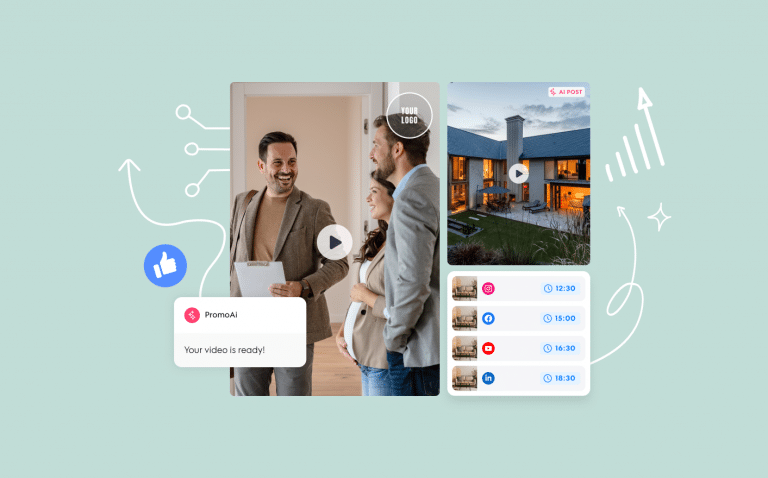
4 Brands That are Killing it with Video Marketing
Did you know the first television commercial aired over 77 years ago? That’s right, it was July 1, 1941, when Bulova, a watch company, aired a 10-second spot. Ever since then, video marketing has been an integral piece of advertising and marketing strategies for brands looking to promote their business.
So, yeah, video marketing has been around for a while. But why then, does it feel like, in 2019, the importance of video is supersized? Simply put: because it is.
Video marketing may have been around for a long time, but it’s only been truly growing by leaps and bounds in the past few years. Today, there’s more video content added online in 30 days than major US television networks have produced over the course of 30 years. Not to mention, commercials were (and still can be) costly to produce. So, until recently, video marketing simply wasn’t an option for all brands.
Now, creating awesome video marketing content is attainable and it’s exploding like never before. There are tools that make it easy and affordable to make your own video ads. Plus, popular social networks make it easy to upload and share more video than ever. It’s not only changing how brands promote a product or service, but how they engage with their customers.
There are so many unbelievably creative ways that brands are using video marketing. From promo videos to how-to videos to weekly webisodes, the sky’s the limit. We can all learn a thing or two from the brands that are already crushing it at video marketing. Let’s see if we can take a few tips from their playbook.
4 brands that are crushing video marketing
Videos that put the “we” in WeWork
How can brands use video marketing to create an instant connection with their target audience? One simple word – storytelling.
That’s exactly what WeWork does with many of its video series, including Veterans in Residence, Refugee Initiative, and Member Spotlights – all on their YouTube channel.
All of these videos feature unique businesses that use the popular co-working space. These videos all tell a story – Personal trainers that employ former prison inmates to lead workouts, an Army veteran turned commercial kitchen consultant and even refugees turned WeWork employees.
Pro-tip: Use storytelling to build an emotional and personal connection.
Video quite literally brings stories to life and captivates your audience, helping them create an emotional connection with your brand. In this type of videos, your product or service is not the star of the show.
The stories told in these videos should build a bridge between your brand and your target audience. Allow them to picture themselves in the story or make it relatable to something that they care about.
Tech-savvy Slack knows a thing or two about branding
Slack, which has become just as much a verb as a noun, is a cloud-based workplace communication hub used for easy collaboration and integration with other tools. Since its launch in 2013, Slack has amassed over 8 million daily active users.
Slack also has somewhat of a personality or a unique style to it. The same can be said for the content it produces – everything from blogs to podcasts to videos. It’s all so recognizably Slack. The company has a pension for staying on brand. Visit their YouTube channel and you’ll see consistent colors, themes, and even messaging and video length.
Slack’s CMO Bill Macaitis explains it best in an interview with Mashable. While his statement refers to branding in general, it definitely applies to how Slack approaches video marketing, and how you should, too.
“Developing your brand tone and voice is an important first step in delivering a cohesive brand.” And he continued, marketing “is often one of the first touch points that customer has with your brand. It is critical that they have a great first experience.”
Pro-tip: Create your own unique brand style.
What if your video is someone’s first interaction with your brand? Not only do you want it to make a good first impression, but you want the viewer to learn something, too. Create a style guide that includes both general and video-specific guidelines.
How Squarespace sells with an inspiring CTA
Squarespace is no stranger to using star power in their video marketing. In 2015, the website builder ran a campaign featuring Jeff Bridges, and they recently revisited the idea, this time turning to Idris Elba.
This video of the campaign is 1:05 long and follows Idris as he whimsically daydreams about what he could be when he grows up. While it’s a childlike approach to daydreaming, it’s an inspiring message to adults that with Squarespace, their dreams become a reality. And what better time to pitch a sale than when your audience is feeling inspired?
Pro-tip: Subtle CTAs go a long way.
When we say pitch a sale, we don’t mean making a direct ask in the video. But soft nudges in the right direction can be a good thing. What we love about the Squarespace video is that it ends with a subtle yet powerful call to action: “Dream it. Make it. Make a website worthy of your dreams.” The CTA perfectly fits the mood of the video, piquing the curiosity of the viewers.
How Amazon Web Services puts people first
For being one of the world’s largest cloud computing services available, Amazon Web Services sure knows how to put individuals and their ideas first – at least in their video marketing. In one of their latest campaigns, “We Did,” you’d think the video would feature all of the accomplishments AWS has made. In fact, it’s the complete opposite.
The video features brilliant ideas made possible by Yelp, Netflix, and AirBnB and concludes with how they’re all supported by AWS. However, the focus is on how people use those services every day, not the businesses that created them.
This is something that all the examples in this article have done well. Put the focus on people. It’s the most intrinsic way for the viewer to relate to what they’re watching. It allows them to see your product or service through the lens in which they’ll use it – at work, at home, and anywhere in between.
Pro-tip: People are the most interesting part of your ad.
AWS does a good job at allowing their service to play a supporting role to the people who use it. It just goes to show that your brand doesn’t always have to take a backseat when it comes to connecting with people.
Being successful
Each of the above brands brings something unique to the table when it comes to their approach to video marketing. However, they are all able to connect with their intended audience. You don’t have to be a major player in the B2B space or a multimillion-dollar SaaS company that commands the internet.
Brands of all shapes and sizes are finding success through video. The above examples are just some of the ways success is possible. Create meaningful connections, master the art of telling your own story, and always keep your audience in mind. It may take a few tries, but successful video marketing is well within your grasp – especially with an easy to use video maker like Promo.com.



